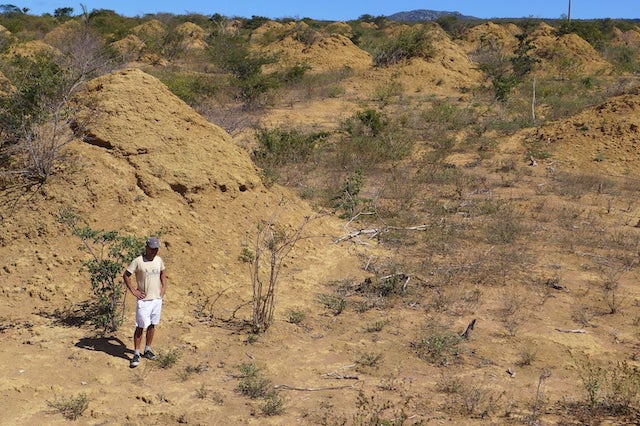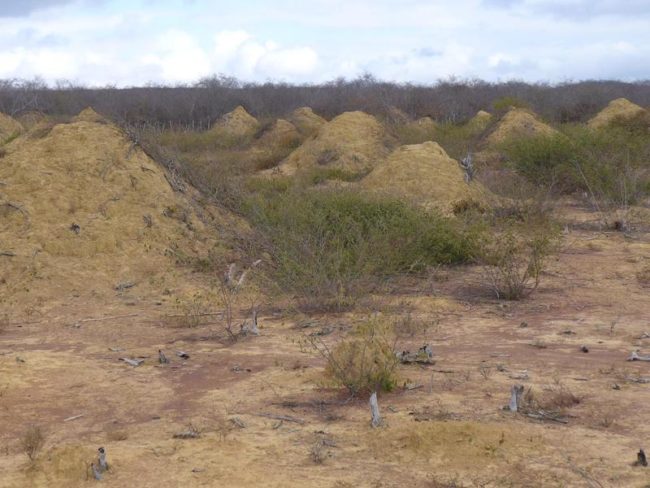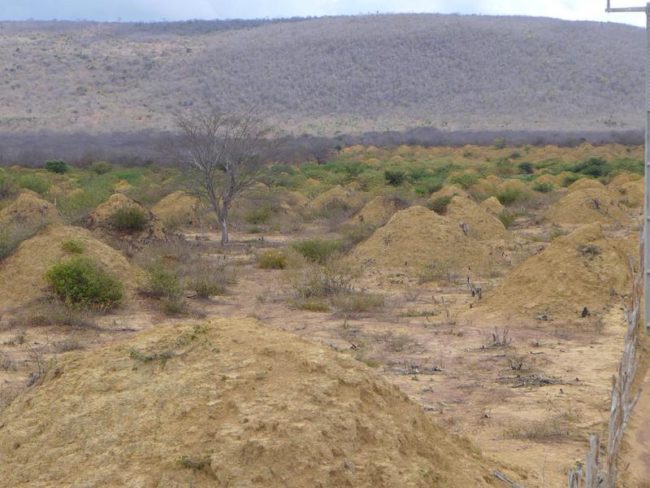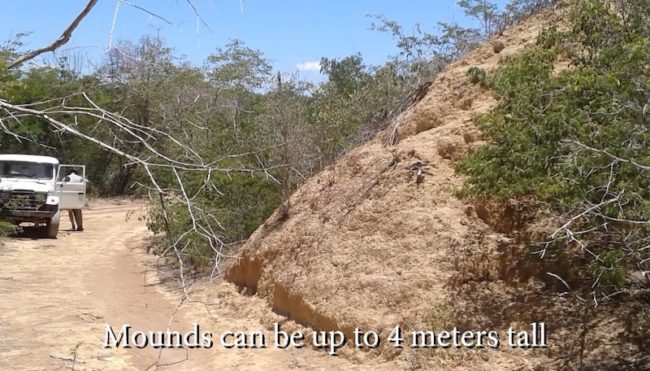Well yes, my title is a tad clickbaitish, so let’s first do a quick reveal. The vast city consists of termite mounds. If that sounds yawn inducing, hit pause and consider this …
- This is not a story about a lot of termite mounds spread over a few miles. Instead it is a story about a vast collection of over 200 million termite mounds that cover an area of over 230,000 km2
- To get your head around the scale here, these termite mounds, located in northern Brazil, cover an area that is roughly the size of the UK. In a US context that would be about the size of Minnesota.
- It is ancient and dates back as far as 4,000 years, yet the termites still live there.
- Humans build cities, but we have never built anything on this scale
Various media outlets have been running the story and that is wholly appropriate. The age and scale of this is jaw-dropping stuff. It is truly a new biological wonder.
The Alpha Source
The details can all be found within an open access paper that was published in Current Biology on 19th Nov 2018.
Titled “A vast 4,000-year-old spatial pattern of termite mounds” the abstract lays out the content as follows …
Here, we describe a vast array of soil mounds constructed by termites (Syntermes dirus) that has persisted for up to 4000 years and covers an estimated 230,000 km2 of seasonally dry tropical forest in a relatively undisturbed and climatically stable region of Northeast Brazil. The mounds are not nests, but rather they are generated by the excavation of vast inter-connecting tunnel networks, resulting in approximately 10 km3 of soil being deposited in 200 million conical mounds that are 2.5 m tall and approximately 9 m in diameter. S. dirus termites are still present in the soil surrounding the mounds and we found that intra-specific aggression occurred at a scale much larger than an individual mound. We suggest that the complex network of tunnels built to access episodic leaf-fall has allowed for the optimization of waste soil removal, which over thousands of years has formed an over-dispersed spatial pattern of mounds.
How do they know how old it all is?
Soil samples collected from the centers of 11 mounds and dated indicated that the mounds were filled 690 to 3,820 years ago. That makes them about as old as the world’s oldest known termite mounds in Africa.
Why is this only now being reported?
The mounds are largely hidden from view in the fully deciduous, semiarid, thorny-scrub caatinga forests unique to northeastern Brazil. They’d only really come into view by “outsiders,” including scientists, when some of the lands were cleared for pasture in recent decades.
What motivated the termites to build on this scale?
The termites much prefer to be underground, so they have excavated a vast complex of tunnels. They don’t actually live in the mounds, those consist of the soil they have removed from underground for the creation of their tunnels.
The researchers investigated whether the strangely regular spatial pattern of the mounds was driven by competition amongst termites in neighboring mounds. Their behavioral tests found little aggression at the mound level. That’s compared to obvious aggression amongst termites collected at greater distances from one another.
The findings lead the researchers to suggest that the over-dispersed spatial mound pattern isn’t generated by aggressive interactions. Instead, Martin and his colleagues propose that the mound pattern arose through self-organizational processes facilitated by the increased connectivity of the tunnel network and driven by episodic leaf-fall in the dry forest.
They say that a pheromone map might allow the termites to minimize their travel time from any location in the colony to the nearest waste mound. The vast tunnel network apparently allows safe access to a sporadic food supply, similar to what’s been seen in naked mole-rats, which also live in arid regions and construct very extensive burrow networks to obtain food, the researchers report.
The scale of it all
They have an illustration of the scale ….
(A top left) This shows you the Core area (orange) of S. dirus mounds confirmed by ground visits. The MAXENT model predicted suitable area, and new mound sites confirmed by visits (orange triangle) or using satellite images (black triangles). Dated mounds indicated by red squares. Great Britain outline illustrates the extent of the mound fields.
(B top right) This is a Satellite image with the position of each mound indicated by a black dot, indicating an over-dispersed spatial distribution.
(C bottom half) This is a sketch showing the mound structure and network of major tunnels (solid lines) and smaller vertical foraging tunnels (dashed lines). The images illustrate the various aspects of the sketch.
An ‘unknown’ biological wonder
To quote the lead author, Stephen Martin of the University of Salford in the UK …
“These mounds were formed by a single termite species that excavated a massive network of tunnels to allow them to access dead leaves to eat safely and directly from the forest floor. The amount of soil excavated is over 10 cubic kilometers, equivalent to 4,000 great pyramids of Giza, and represents one of the biggest structures built by a single insect species.”
Co author Roy Funch of Universidade Estadual de Feira de Santana in Brazil …
“This is apparently the world’s most extensive bioengineering effort by a single insect species, Perhaps most exciting of all–the mounds are extremely old–up to 4,000 years, similar to the ages of the pyramids.”
Stephen Martin very nicely sums it all up as follows …
“It’s incredible that, in this day and age, you can find an ‘unknown’ biological wonder of this sheer size and age still existing, with the occupants still present,”
Further Illustrations
Further Reading
You have the original open access paper here.
Popular Science also provides further insights
Tweets
Researchers have discovered a gigantic complex of 200 million termite mounds in northeastern Brazil, which may be up to 4,000 years old and covers an area about the size of Great Britain. https://t.co/I3JHrh9jsn
— Jodi Ettenberg (@legalnomads) November 21, 2018
“I said, ‘Look at those, there must be thousands of these mounds. And he went, ‘Nah, there’s millions.’” In fact there were 200 million. https://t.co/HehwpBCq9F
— NYT Science (@NYTScience) November 21, 2018
4,000-Year-Old Termite Mounds Visible from Space https://t.co/78AblTemrv pic.twitter.com/DIA9WxrQLO
— ScienceDaily (@ScienceDaily) November 20, 2018
I welcome our new termite overlords
— Jeff Levy (@jefflevy) November 21, 2018





